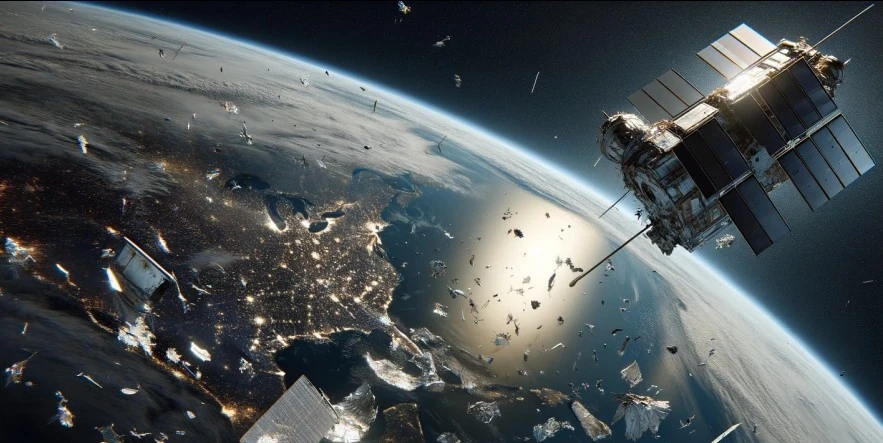AI revolutionizes space debris detection, surpassing conventional methods

As we extend our reach into the cosmos, the clutter of space debris in Low Earth Orbit (LEO) becomes a pressing concern, threatening the safety and sustainability of space operations. To help with this growing problem, a recently published study in the journal IET Radar, Sonar & Navigation, introduced a promising solution leveraging the power of artificial intelligence (AI) to enhance the detection of these small but hazardous objects.
The crux of the problem lies in the sheer volume of objects—a mix of operational satellites, defunct hardware, and fragmented debris—whizzing around our planet at staggering speeds. Traditional monitoring methods, relying on radar and radio telescopes, have been somewhat effective in tracking larger items. Yet, a significant portion of this orbital debris consists of tiny metallic fragments, elusive to conventional detection techniques.
The new study introduces a novel approach using a deep learning architecture known as You-Only-Look-Once (YOLO) to significantly improve the detection rates of these small space objects by radar. YOLO, a renowned algorithm within the field of computer vision, offers a fast and accurate method for object detection.
The research team focused their efforts on modeling a prominent European radar system, the Tracking and Imaging Radar (TIRA), in its tracking mode. This enabled the generation of rich training and testing datasets essential for the application of the YOLO-based detection system.
Simulated evaluations revealed that the YOLO-based method substantially outperforms traditional detection systems, delivering a high detection rate of small objects while maintaining low false alarm rates. This represents a significant advancement in space surveillance capabilities, potentially revolutionizing how we manage and mitigate the risks associated with space debris.
“In addition to improving space surveillance capabilities, artificial intelligence–based systems like YOLO have the potential to revolutionize space debris management,” said co–corresponding author Federica Massimi, Ph.D., of Roma Tre University, in Italy.
“By quickly identifying and tracking hard-to-detect objects, these systems enable proactive decision-making and intervention strategies to mitigate collisions and risks and preserve the integrity of critical space resources.”
By enabling rapid identification and tracking of hard-to-detect objects, these AI systems facilitate proactive decision-making and intervention strategies. This could significantly reduce the likelihood of collisions, safeguarding vital space infrastructure and preserving the integrity of critical space resources.
References:
1 Study finds potential benefits in AI–based systems for spotting hard-to-detect space debris – Wiley – March 6, 2024
2 Deep learning-based space debris detection for space situational awareness: A feasibility study applied to the radar processing – Federica Massimi, Pasquale Ferrara, Roberto Petrucci, Francesco Benedetto – IET Radar, Sonar & Navigation – March 6, 2024 – https://doi.org/10.1049/rsn2.12547 – OPEN ACCESS
Featured image credit: The Watchers

Commenting rules and guidelines
We value the thoughts and opinions of our readers and welcome healthy discussions on our website. In order to maintain a respectful and positive community, we ask that all commenters follow these rules.